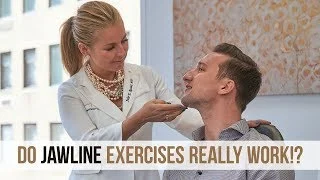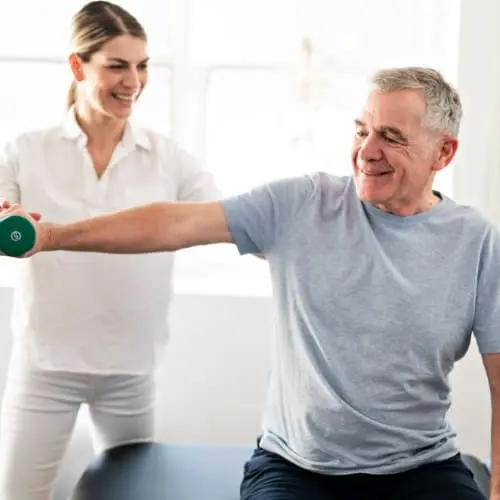18 Best Exercises Of Tibialis Anterior
Overview
- The Tibialis Anterior is a critical muscle located in the front of the lower leg, responsible for dorsiflexion of the ankle and foot. Strengthening this muscle is vital for maintaining balance, stability, and overall lower limb function.
- By incorporating specific exercises targeting the tibialis anterior into your routine, you can enhance its strength and support various activities such as walking, running, and jumping.
- The tibialis anterior is the opposite of your calves. The gastrocnemius and soleus muscles work together to plantarflex or extend your ankle, while the tibialis anterior pulls the foot up toward your shin, an action known as dorsiflexion. In addition, the tibialis anterior aids ankle inversion and supports the arches of your feet.
- Walking or running requires the use of your tibialis anterior. It lifts your toes so they do not catch on the floor while you move from one step to the next.
- A weakened tibialis anterior may result in shin pain, also known as shin splits. This is a group of injuries that are typically caused by excessive high-impact training, such as running and jumping.
- Additionally, the tibialis anterior can influence the size as well as shape of your lower leg. However, the contribution is minimal, so you will need to work your tibialis commonly if you anticipate it to grow significantly.
Anatomy
Origin
- It comes from the lateral condyle, upper half, as well as two-thirds of the lateral portion of the tibia.
- Adjacent to a component of the interosseous membrane, The surface of the fascia.
- There is an intermuscular septum between it as well as the digitorum extensor longus.
Tibialis anterior (marked in green) in an anterior view.
Insertion
- The medial and under surfaces of the first cuneiform bone, as well as the bottom of the first metatarsal bone.
Nerve Supply: Deep Peroneal Nerve
Blood Supply: Anterior Tibial Artery
Function
- The tibialis anterior dorsiflex the foot at the talocrural joint while inverting it at the subtalar joint. Because it pulls the ankle joint off the ground as the leg moves and stabilizes it when the foot hits the floor, it is necessary for walking, hiking, and kicking the ball. It also provides support for the medial part of the foot’s longitudinal arch during any movement.
- gitorum longus and extensor hallucis longus. It also protects the anterior tibial vessels as well as the fibular nerve in the proximal part of the leg.
- The tibialis anterior tendon typically runs below its extensor retinaculum, which keeps it in place. however, in some cases, the superficial and deep layers of the extensor retinaculum form a distinct tunnel for the muscle’s tendon. It is worth noting that the superior extensor retinaculum contains the only extensor tendon in its synovial sheath. The sheath goes from above the superior extensor retinaculum to the talonavicular joint.
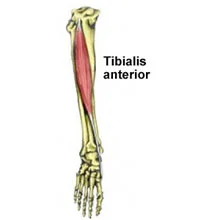
What causes tightness in the tibialis anterior muscles?
- If your tibialis anterior muscles are tight, it is annoying because it makes the simple task of walking difficult. Tight tibialis anterior can cause shin splints due to any of the following reasons:
- Direct trauma to the muscular area Intense or long-term workouts with your ankle constantly flexed upwards. Running, jumping, and other high-impact activities on hard surfaces. Imbalanced gait when walking or running A sudden change in the exercise routine
- If you have weakness in your anterior tibialis muscle, which is located in front of your shin in your lower leg, you may struggle to flex your ankle and lift your foot off the ground. This is also known as a foot drop. It can also produce a high-stepping gait. Fortunately, physical therapy can help you gain normal strength and motion in your leg.
- There are numerous treatments for foot drops, including neuromuscular electrical stimulation (NMES) as well as ankle-foot orthotics, which stabilize and support your ankle and foot.
- Exercise is one of the most effective ways to correct foot drops caused by tibialis anterior weakness. These exercises utilize specific motions to increase the anterior tibialis muscle’s endurance and performance. Calf muscle stretches are also beneficial.
How Do You Know If Your Tibialis Anterior Muscle Is Weak?
- Person barefoot, holding his calf in pain. Symptoms of a weak tibialis anterior muscle include shin splints and ankle discomfort, as well as swelling caused by increased joint strain. These can be extremely painful and frequently travel along the shin bone.
- Another possibility is that you will feel an aching sensation around your ankle, which may be accompanied by swelling.
- These are the results of the ankle being subjected to significantly increased strain and pressure due to a lack of muscle support for the joint.
- A quick test would be to wrap an ankle cuff weight around your toes and then attempt to lift it by flexing the ankle.
- If you have difficulty lifting even a light load, you may need to regularly perform targeted tibialis anterior exercises.
- Shin splints, also known as medial tibial stress syndrome, are common among athletes who have recently increased or changed their training routines. The increased activity stresses the muscles, tendons, and bone tissue.
Exercise for Tibialis Anterior muscle:
In this guide, we’ll explore some of the best exercises designed to effectively engage and strengthen the tibialis anterior muscle.
There are two main types of exercises:
- Stretching exercise for Tibialis anterior muscle
- Strengthening exercise for Tibialis anterior muscle
What are the health benefits of stretching the tibialis anterior muscle?
You should be aware of the following health benefits:
- decreased likelihood of injury to the calves, ankles, as well as feet.
- Reduced chances of developing tibialis anterior tendonitis and improved ground clearance while walking to prevent tripping.
- Reduce your chances of getting shin splints or stress fractures. Shin splints recover more quickly.
- Increased athletic performance in sports where the ankle is “locked” to kick a ball, such as soccer
- Increases ankle range of motion, including dorsiflexion, inversion, and adduction. It also provides support for the foot’s medial arch.
- It also aids in planned postural modification (APA) during gait, when the tibialis anterior flexes the knee at the stance limb, causing the tibia to move forward.
- It also aids in eccentric deceleration of foot plantarflexion, pronation, and eversion.
Stretching exercise for Tibialis anterior muscle
Standing Anterior Tibialis Shin Stretch

- How to Perform: In Standing. To maintain balance, place one hand on a wall or other support.
- Slightly bend both knees.
- The right foot stays squarely on the floor. The foot to be stretched, or the left foot, is placed just behind the stable/right foot, with the toe of the left foot touching the floor.
- Keeping your toe firmly on the floor, pull your left leg forward until you feel a stretch from the top of your left foot to your shins.
- Take the stretch for 10-30 seconds.
- Repeat the stretch with your right foot.

Kneeling Shin Stretch
- How to Perform: Kneel and slowly stretch your shins.
- This stretch requires good knee flexion because you will be sitting on your heels. If it causes knee pain, don’t do it.
- Kneel on a mat, keeping the tops of your feet flat on the ground and your buttocks over your heels.
- You feel a stretch on your shin.
- Hold for 10-20 seconds.
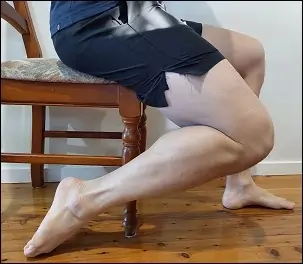
Seated Shin Stretch
- How to Perform: Sit in a chair.
- Drop your knee to the floor, extending your toes into the floor as in the standing stretch.
- Slowly pull forward while keeping your toes planted on the floor, similar to a standing stretch but seated.
- Hold for 10-20 seconds.
- Repeat with both feet.
Lying Shin Stretch
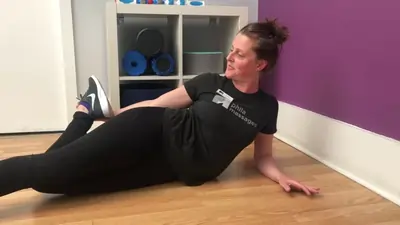
- How to Perform: This stretch is similar to the lying quadriceps stretch.
- Lie on one side. Now, bend your upper knee and place your foot behind your back.
- Reach back, grab your forefoot, and pull it to your back.
- Hold for 10-20 seconds.
- Repeat with both feet.
Toe walking

- How to Perform: In Standing. Now shift your body weight to your toes and heels off the ground.
- Then walk on your toes, which provides a dynamic shin stretch.
- You can use the wall as a support during your walk.
- Walk for 1–2 minutes.
Ankle ABCs
- How to Perform: Moving the ankle in multiple directions is one method for slowly stretching your tibialis anterior.
- Take a comfortable sitting position, leaving your feet unsupported. Take away your shoes and socks.
- Gently draw the alphabet in the air, starting with your big toe. Draw as far as possible in all directions. Never enable your knee to move; all movement should originate from your ankle.
- When your foot is pointed downward, you should experience a pulling sensation along the front of your shin.
- Perform the alphabet 2-3 times on each leg.
Standing Stretch
- How to Perform: Perform this stretch with a partner near a stable surface.
- Stand on the right foot. Bend your left knee and bring your heel up toward your buttocks to stretch the left tibialis anterior.
- Grab the top of your left foot with your left hand as you bring it closer to your buttock.
- Your toes should be pointing up to the roof.
- Slowly pull your foot in until you notice a stretch on the front of your left shin.
- Hold for 25-30 seconds, then relax. Repeat three times for both legs.
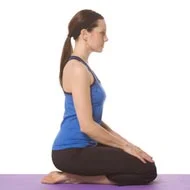
Tibialis anterior muscle stretch
- How to Perform: Kneel on the ground, tops of feet facing down.
- Place your hands in front, pointing slightly inward.
- To feel the stretch, lean forward with weight on your hands and lift your body while keeping your feet on the ground.
- Hold this muscle stretch for 15-30 seconds, then repeat 2-3 times.
What are the safety as well as precautions for performing a tibialis anterior stretch?
There are some safety precautions you should look for:
- Do not bounce during the tibialis anterior stretch. It injures your muscles. For example, consider strain.
Never overstretch the tibialis anterior muscles. - Do not do it too frequently; it causes muscle fatigue. You should follow a suggested repetition time.
Your therapist should recommend a hold time for your stretch, which is typically 30-60 seconds.
Never stretch on the previously injured part of your body. Such as fractures and sprains.
Never stretch cold muscles; it causes pain. Stretch it after you’ve warmed up your muscles.
Types of exercises for strengthening the tibialis anterior:
Seated Elastic Band Exercise
How do I do it?

- This exercise requires an elastic resistance band.
- To do this exercise, sit on the ground with one leg extended in front of you. now Alternatively, you can sit on a chair and prop your foot on another chair.
- Wrap a resistance band around the ankle. Attach one end to a stable object, such as a table leg, and the other around the foot near your toes.
- It may be beneficial to place your lower leg on a small pillow to ensure the heel of the foot does not rub in opposition to the floor.
- To perform this exercise. Pull your toes and feet up, keeping your knees extended.
- Pull your foot up as far as you can, then hold the end position for two seconds.
- Slowly return to the original position.
- Work the anterior tibialis muscle for 10 to 20 repetitions, or until you are unable to flex your ankle upward due to muscle fatigue.
Cuff Weight Exercise
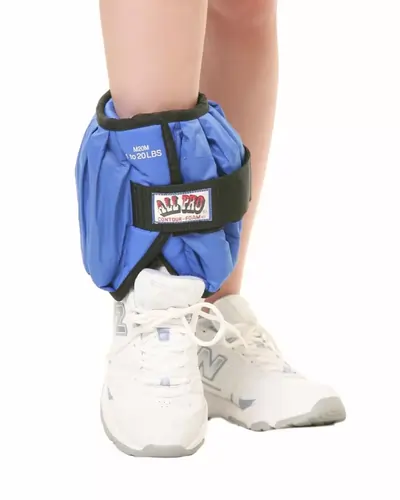
How do I do it?
- This exercise requires a cuff weight.
- An object with padding that you can wrap around your ankle is called a cuff weight. To complete this exercise, sit in a chair and wrap a cuff weight around your toes.
- Make sure it’s secure. Place the footrest on the ground and get started with this exercise by using a cuff weight on your foot before flexing your ankle to bring your foot and toes up towards your knee.
- Hold your foot flexed up for two seconds.
- Slowly lower your toes back to their original position.
- Repeat the exercise 10 to 20 times.
Isometric Exercise for Footdrop
How do I do it?
- Isometric exercise is a type of motion that involves pushing against an object that cannot be moved. It’s easy to do and can help strengthen the anterior tibialis muscle in specific ranges of motion (ROM) in the ankle region.
- To perform isometric anterior tibialis strengthening, sit in a chair or lie down.
- Cross one leg over the other, keeping your affected leg on the bottom.
- Place your foot on top of the ankle that you want to exercise.
- Press the top of your weak foot against the sole of the other foot.
- To resist, press down with the stronger foot. Remember that movement originates from the foot, not the ankle. Hold this position for five seconds before slowly releasing.
- Perform ten to fifteen repetitions of the exercise twice or three times per day. Isometric exercise may serve to strengthen your muscles, but strength only develops in the specific range of motion in which you exercise. That means you should change the position of your ankle while doing the exercise.
Seated Calf Stretch
How do I do it?
- If your anterior tibialis muscle is weak, you will have trouble flexing your foot. This indicates that you have a shorter calf.
- A shortened calf is a tight muscle, so stretching may be required to fully correct your foot drop.
- To perform this exercise, wrap a towel around the ball of your foot and extend your knee.
- Pull the towel’s ends up, flexing your foot and stretching your calf.
- Hold the stretch for 15–30 seconds.
- Relax. Perform this three times.
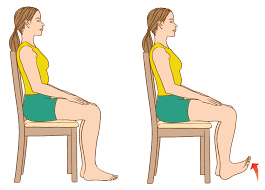
Seated Toe Raises
How do I do it?
- To perform this exercise, sit on a chair with your feet in front of you.
- Hold for two to five seconds at the top.
- Repeat for two or three sets of 20-25 repetitions.
Wall Toe Raises
How do I do it?
- Stand 12 to 15 inches away from the wall, with your back to it and your feet hip-width apart.
- The knees should be slightly flexed before leaning back into the wall.
- Elevate your toes off the ground, hold for 2-4 seconds, then return to the ground.
- Repeat for two or three sets of 15-20 repetitions.
Heel walk
How do I do it?
- This exercise requires you to stand on both feet hip-width apart, with no shoes on.
- Elevate your toes off the ground so that your heels make contact with the ground.
- Walk forward while leaning back, putting your weight on your heels.
- Repeat this for 30-40 seconds.
- Repeat this two or three times.
- When have you not done
Band Foot Drop
How do I do it?
- Loop a resistance band near an anchor near the floor.
- Sit down and loop the elastic band over your foot.
- Flex the ankle up towards you and briefly hold at the top.
- Slowly return to the starting position.
- Repeat for 10-15 repetitions.
- Switch sides.
Uphill Run Exercise
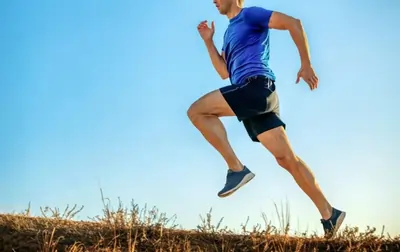
- Most people go for runs on level ground. However, running with your feet flat on the floor does not adequately challenge the tibialis anterior.
- You can try finding a steep hill and running or walking up it every day.
- You can additionally boost the number of times you have to push your body up the incline by taking very small steps.
- At the same time, you should avoid keeping your feet off the ground.
- That tip-toe approach will not produce the same results.
- The increased pressure on your lower legs will be concentrated around the calf.
Isometric exercise
- You can do these seated, but I find that lying down on the ground works best.
- The advantage of an isometric exercise is that it allows you to add strain to the muscle without putting pressure on the joints.
- Lay down on a yoga mat, one leg crossed over the other at the ankle joints, with your feet stretched out.
- Now, push the lower leg straight up, as if you were trying to lift the upper leg.
- The goal is to feel the most stress in the shin muscles of the leg.
- Hold for five seconds and then repeat 15 times.
Advantages of The Tibialis Anterior Strengthening Exercise:
- Helps to reduce the risk of calf, foot, and ankle injuries.
- Increases ground clearance while walking to prevent tripping.
- Reduce the risk of developing shin splints as well as stress fractures.
- Increase the speed of shin splint recovery.
Who Should Stretch and Strengthening Exercise the Tibialis Anterior?
Everyone should stretch and strengthen their tibialis anterior muscle. This relatively small muscle is essential for our movement, so if you walk, you should perform tibialis anterior stretches as well as exercises. This is especially true for those who engage in jumping or running activities. A large as well as relaxed tibialis anterior muscle may mitigate the negative effects of the feet repeatedly striking the ground.
Tibialis Anterior Massage Self-Treatment
Self-massage or trigger point therapy for the tibialis anterior can help relieve muscle tightness and pain. If you’re wondering how to massage the tibialis anterior, we’ve got you covered with these simple techniques to relax it. These massages can be performed at home using as little as a massage ball or a tennis ball.
Tibialis Anterior Vertical and Lateral Massage
- Put a massage ball, tennis ball, or foam roller on the floor.
- To place the tibialis anterior muscle on the ball, rotate your leg internally.
- Rolling up and down across the muscle.
- Try this for 30-60 seconds.
- Repeat with the other leg.
- This can also be accomplished by moving laterally throughout the muscle instead of vertically.
Tibialis Anterior Press as well as Flex
- Sit on the floor, a leg extended toward you.
- Use pressure on the trigger points on the muscle using a roller stick or massage ball.
- While applying pressure, flex your ankles upward and downward
- Try this for 30-60 seconds.
- Repeat with the other leg.
- Note: You can also do this with the fingers by pressing on the trigger points.
Summary
- Toe drag stretch, kneeling anterior stretch, resistance band shin workouts, uphill runs, as well as isometric exercises are all good ways to stretch the tibia. A shin split indicates a weak tibialis anterior.
- According to the Mayo Clinic, replacing running shoes every 350 to 500 miles can help prevent shin splints, a common problem caused by weak tibialis anterior muscles.
- In my opinion, runners and athletes should perform these tibialis anterior exercises regularly to avoid injuries as well as enhance overall lower leg stability and strength.
- Exercise is a highly effective treatment for foot drop that results from a weak as well as injured anterior tibialis muscle. The exercises use gentle resistance to strengthen the muscles and can be performed at home or as part of a rehabilitation program.
- A simple at-home exercise routine requires only a chair, an elastic band, as well as cuff weights. These specialty items are readily available online or at most sporting goods stores.
FAQ
How to exercise the tibialis anterior?
Begin the isometric exercises for the tibialis anterior while sitting in a chair or lying on the floor with the legs extended in the opposite direction. traverse one leg in the other around the ankles. If you have a weaker tibialis anterior in one leg than the other, begin with that leg on the bottom.
Can tibialis anterior weakness cause foot drop?
Anterior tibialis exercises as well as stretches are one of the most effective ways to fix foot drop caused by tibialis anterior weakness. Specific strengthening exercises can isolate and strengthen the muscle, whereas stretching exercises can loosen the muscle and increase the range of motion.
Are tibialis muscles tight?
Tight muscles can lead to injuries as well as limited movement, so make sure you stretch and strengthen the tibialis anterior. Toe drags are a simple but effective way to stretch your shin as well as ankle muscles. They can be used for both a warm-up and a general stretching routine.
Does strengthening tibialis anterior reduce shin splints?
If you run, strengthening the tibialis anterior just reduces your risk of developing shin splints. Strengthening your calves as well as hip abductor muscles will significantly reduce your risk of developing shin splints.
What is the tibialis anterior?
The tibialis anterior is one of three primary muscles in the leg’s anterior compartment, also known as the foot’s dorsiflexion. It originates mediocaudally from the lateral tibia, interosseous membrane, and crural fascia and ends at the medial cuneiform and first metatarsal bone.
Where do tibial fibers end?
The fibers run vertically downward and terminate in a tendon, which is visible on the anterior surface of the muscle in the lower third of the leg. This muscle in the upper leg overlaps the anterior tibial vessels as well as the deep peroneal nerve.
REFERENCES
- Dale, P. (2023, January 17). The 10 Best Tibialis Anterior Strengthening and Stretching Exercises. Fitness Volt. https://fitnessvolt.com/tibialis-anterior-exercises/
- Tirgar, P. (2022, April 19). Tibialis anterior strengthening exercise: Health Benefits, Types, How to do? Mobile Physiotherapy Clinic. https://mobilephysiotherapyclinic.in/tibialis-anterior-strengthening-exercise/
- Set, S. F. (2024, February 12). 9 Best Tibialis Anterior Stretches & Exercises (Plus Myofascial Release). SET FOR SET. https://www.setforset.com/blogs/news/tibialis-anterior-stretches-exercises
- Pt, B. S. (2023, April 12). 8 Best Anterior Tibialis Exercises & Stretches. Verywell Health. https://www.verywellhealth.com/exercise-program-to-correct-foot-drop-2696048
- Tibialis Anterior. (n.d.). Physiopedia. https://www.physio-pedia.com/Tibialis_Anterior
- Clinic, M. P. (2023, December 9). Tibialis Anterior Muscle – Anatomy, Structure, Function, Exercise. Mobile Physiotherapy Clinic. https://mobilephysiotherapyclinic.in/tibialis-anterior-muscle-details/
- Tibialis anterior muscle. (2023, November 3). Kenhub. https://www.kenhub.com/en/library/anatomy/tibialis-anterior-muscle
- Feger, J., & Jones, J. (2009, April 9). Tibialis anterior muscle. Radiopaedia.org. https://doi.org/10.53347/rid-6023


